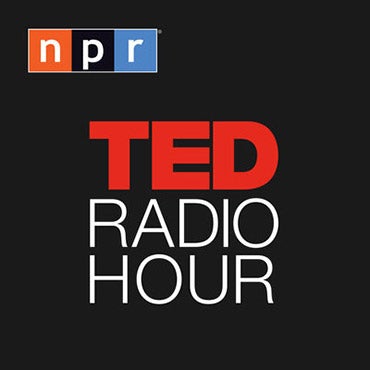Why we still love the Beatles
Listen
The Fab Four with Ed Sullivan. (AP Photo, file)
Almost 21 years ago, my wife gave birth to our first child. I had been awake for about 24 hours, so I was more than a little dazed when the obstetrician placed our newborn daughter in my arms and asked me if I had any questions.
“Yes,” I blurted. “Will she know who the Beatles are?”
“Beats me,” he replied, with a laugh. “But why do you care?”
I’ve been wondering about that this month, as America marks the 50th annniversary of the Beatles’ first visit to these shores. The two surviving members of the band, Paul McCartney and Ringo Starr, sang together on stage last month at the Grammy Awards. And last night, exactly a half-century after the Beatles’ historic appearance on the Ed Sullivan Show, CBS aired a two-hour special featuring contemporary pop artists covering their songs.
So what made the Beatles so special, in their time and in our own? Why do we care?
The best way to answer that is to look at the other acts who shared the bill with them on that fateful evening back in 1964. After the Beatles played three songs, a magician named Fred Kaps performed a card trick and a sleight-of hand involving a bottomless salt shaker. The cast of “Oliver” sang a few numbers from their Broadway show. Impressionist Frank Gershin, who later played “The Riddler” on Batman, did send-ups of Dean Martin and Marlon Brando. And then came the inimitable Tessie O’Shea, a generously proportioned banjo player whose best-known song was “Two-Ton Tessie (from Tennessee).”
Get the picture? American popular culture was staid and predictable, produced by self-satisfied adults for their own entertainment; adolescents were mostly left out of the picture. But the Beatles brought them back in. That’s why youngsters in the crowd shrieked and screamed during the band’s three songs, and again when the Fab Four came back to play two more. “If you don’t keep quiet,” Ed Sullivan warned, “I’m going to send for a barber.”
Laying odds on the Beatles’ success
The quip alluded to the Beatles’ famously floppy hair, of course. To promote the band’s American tour, their record company sold “Beatles’ wigs” and required sales staff to wear them at all times. In Hollywood, meanwhile, actress Janet Leigh became the first A-lister to get a “Beatles’ ‘do” from her hair stylist.
A woman, with a man’s haircut? Or were the Beatles a bit like women themselves? The band mixed things up on the gender front, too, which helped account for their extraordinary popularity among young females. The nearest rock icon to the Beatles, Elvis Presley, streamed all of his sexual energy through his hips. The Beatles were sexy in a much safer way, from their preppy clothes through their toothy white smiles and, yes, their long hair. And the girls loved it.
Not everybody did, of course. “Beatle music is high pitched, loud beyond reason, and stupefyingly repetitive,” Newsweek wrote in November 1963, as the Beatles made plans for their U.S. tour. To a reporter at CBS, meanwhile, the Beatles were “merely the latest objects of adolescent adulation” and “the modern manifestation of compulsive tribal singing and dancing.”
Indeed, the Fab Four themselves wondered whether they’d make it in America. “They’ve got everything over there,” Starr told a British reporter. “Will they want us too?” In a now-famous $100 bet they made before the tour, only McCartney wagered that it would be a success; Starr, John Lennon, and George Harrison bet against it.
They needn’t have worried. McCartney’s own father had berated him for the “Americanisms” in his songs, especially the use of the term “yeah” for “yes.” And the band’s carefully cultivated style — long-haired but straight-laced, optimistic but ironic — fit perfectly in the U.S., where the postwar baby boom was coming of age.
Peter Pan syndrome
If you were born in 1946, you were 18 years old when the Beatles came to America. You had purchasing power, thanks to a long run of national economic growth. But you were also restless and impatient, bored by the bland propriety and hollow affectations of the adult world.
Then came the Beatles. Like Bob Dylan, who burst onto the scene around the same time, they wrote their own songs. More than that, though, they channeled the restless the energy of youth itself. As the British poet A. E. Housman wrote, they were “the lads that will never be old.”
And that’s still the key to understanding their appeal today. John and George have passed on, of course, and Paul and Ringo are in their 70s. But in our mind’s eye, they will always be young.
That’s how we want to see ourselves, in these United States: eternally happy, fresh-faced, and eager to embrace the challenges of the world. And we want the same for our kids. The newborn baby I held in my arms is now a young adult, poised and serious and ambitious. I am unspeakably, even painfully proud of her. But I also hope she holds on to the passion and exuberance and plain-old silliness of her youth, and of mine.
And yes, she knows who the Beatles are. We made sure of that.
WHYY is your source for fact-based, in-depth journalism and information. As a nonprofit organization, we rely on financial support from readers like you. Please give today.

